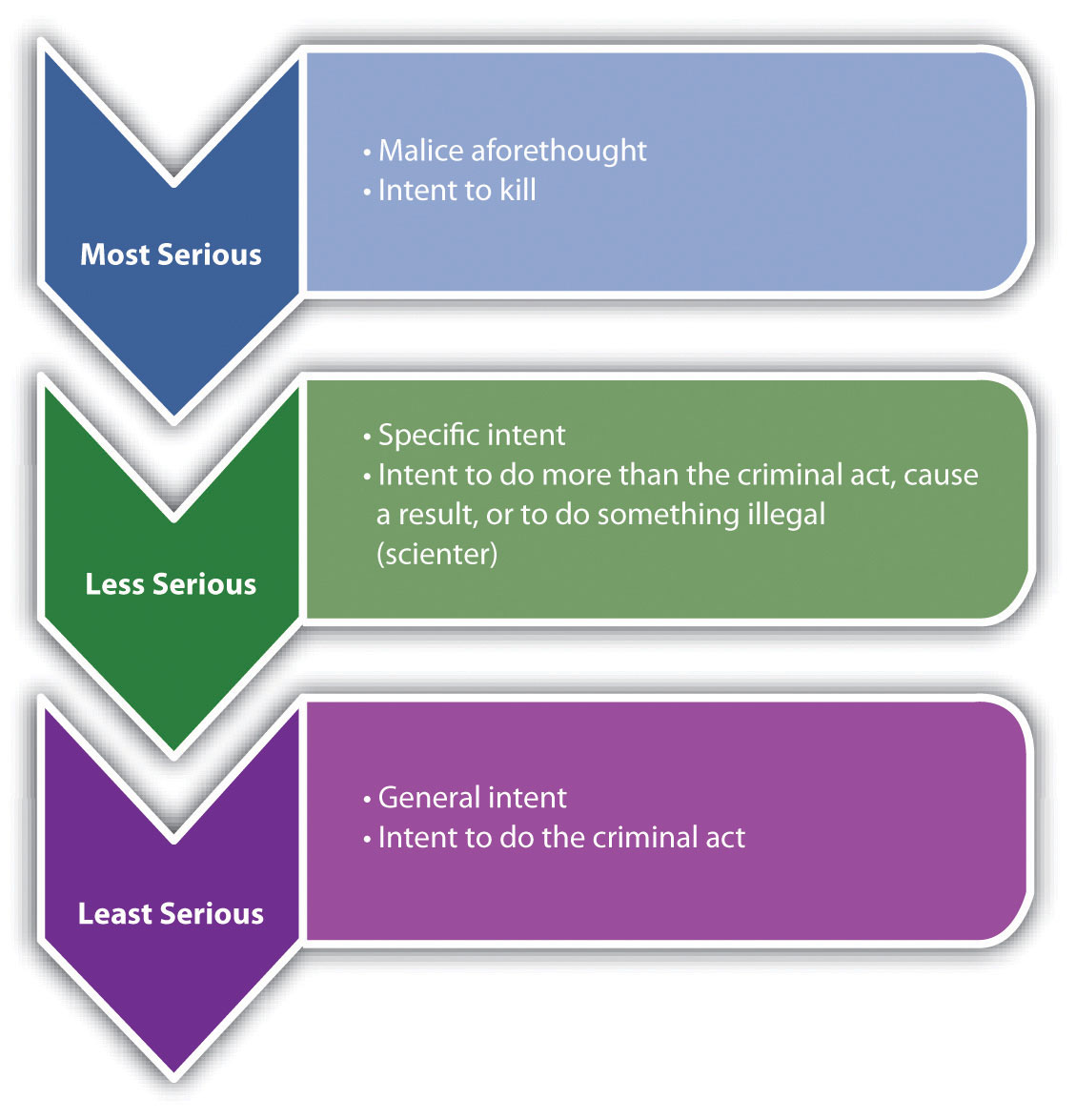What is the Difference between Homicide and Murders?
The terms homicide and murder are often used interchangeably, but in the world of law and order, there is a significant difference between the two. Understanding the difference between homicide and murder can help you make sense of news reports, true crime stories, and legal proceedings involving violent crimes. In this post, we’ll delve into the legal definitions of homicide and murder, the different degrees of murder, and the varying punishments for each. We’ll explore the nuances of each term, the various circumstances that can influence a verdict, and the impact that a clear understanding of these terms can have on society at large. Whether you’re a law student, a true crime enthusiast, or just someone with a keen interest in the justice system, this post will provide you with a comprehensive guide to decoding the difference between homicide and murder.
When it comes to the legal terms associated with taking someone’s life, two words often come to mind: homicide and murder. While they may seem interchangeable, they actually have distinct meanings within the field of law. In this article, we will delve into the nuances of these terms and shed light on their differences.
Homicide
Homicide, in its most basic sense, refers to the act of causing the death of another person. The word itself is derived from the Latin words “homo” meaning human and “caedere” meaning to kill. It is a broad term that encompasses all instances where one person causes the death of another, regardless of intent or circumstances. Homicide can include acts such as self-defense, accidental killings, or even medical procedures resulting in death.
- Broad term for causing the death of another person.
- Encompasses both lawful and unlawful killings.
- Does not specify intent or circumstances.
- Can include acts such as murder, manslaughter, and justifiable homicide.
- Covers a wide range of circumstances and degrees of culpability.

Murder
On the other hand, murder is a specific type of homicide that involves the intentional and unlawful killing of another person. The key distinction here is the element of intent. Unlike other forms of homicide, murder requires the perpetrator to have the deliberate intention to cause the death of another individual. It is a premeditated and malicious act that is considered morally and legally reprehensible in most jurisdictions.
- Intentional killing of another person.
- Requires “malice aforethought” (deliberate intent to cause death or serious harm).
- More serious than other types of homicide.
- Involves premeditation, planning, or a depraved state of mind.
- Can be categorized into degrees (e.g., first-degree, second-degree) with varying severity.
- Carries significant criminal penalties, including lengthy prison sentences or the death penalty.
Understanding the difference between these terms is crucial in the legal realm as it helps define the severity of the crime and determines the appropriate charges and penalties. While homicide can encompass a wide range of scenarios, murder is often viewed as the most serious and punishable offense within the realm of unlawful killings.

As we continue to delve into the intricacies of these legal terms, we will explore the various degrees of murder, the elements that constitute each offense, and the corresponding legal implications. By decoding the difference between homicide and murder, we hope to provide clarity and insight into the complex world of criminal law.
Legal Definitions of Homicide
To fully grasp the distinction between homicide and murder, it is crucial to delve into their legal definitions.
Homicide, in its most basic sense, refers to the act of one person causing the death of another individual. However, it is important to note that not all homicides are considered crimes. Types of homicide include:
- Murder: The intentional killing of another person with malice aforethought.
- Manslaughter: The unlawful killing of another person without malice aforethought.
- Vehicular Homicide: Causing the death of another person while operating a vehicle, often due to reckless driving, driving under the influence, or other traffic violations.
- Infanticide: The killing of an infant within a specific time frame after birth, often committed by the child’s mother.
- Felony Murder: A type of murder where a death occurs during the commission of a dangerous felony, even if there was no specific intent to kill.
- Assisted Suicide: A situation where one person intentionally helps another person to end their own life.
- Serial Killing: The act of killing multiple victims by the same perpetrator over an extended period, typically with a cooling-off period between murders.
- Euthanasia: The deliberate act of ending a person’s life to relieve their suffering, usually in cases of terminal illness or severe pain.
- Honor Killing: The killing of a person, typically a female, by a family member due to the belief that the victim has brought dishonor or shame to the family.
- Mass Killing: The intentional killing of multiple victims in a single incident, often carried out by a single individual or a group.
Legal Definitions of Murder
Murder, on the other hand, is a specific type of homicide that is illegal and carries criminal intent. In legal terms, murder can be classified into different degrees, such as first-degree murder and second-degree murder, depending on the severity of the crime and the presence of premeditation.
- First-degree murder typically refers to a deliberate and intentional act of killing someone with prior planning and malice aforethought. This involves a premeditated decision to end another person’s life, usually accompanied by a clear intention to cause harm or death.
- Second-degree murder, on the other hand, may involve an intentional killing, but without the element of premeditation. It often occurs in the heat of the moment, as a result of sudden provocation, or in circumstances where the offender shows a reckless disregard for human life.
It is important to understand these legal distinctions because they form the basis for how homicide cases are investigated, prosecuted, and adjudicated in the criminal justice system. By recognizing the nuances between homicide and murder, we can gain a clearer understanding of the legal framework surrounding these tragic events.
The legal definitions and classifications may vary between jurisdictions, so it is always advisable to consult the specific laws and regulations of the relevant jurisdiction to ensure accurate interpretation and application.
Intent and Malice Aforethought
When it comes to understanding the nuances between homicide and murder, it’s crucial to delve into the concepts of intent and malice aforethought. While these terms are often used interchangeably, they hold distinct meanings in the legal realm.
Homicide refers to the act of one person causing the death of another, regardless of the circumstances. It is a broad term that encompasses both lawful and unlawful killings. In essence, any action resulting in the loss of life can be categorized as a homicide.

On the other hand, murder is a specific form of unlawful homicide that involves the element of intent and malice aforethought. Intent refers to the deliberate and conscious desire to cause harm or take someone’s life. Malice aforethought, often misinterpreted as mere ill will or spite, actually signifies the premeditation and planning involved in committing the act.
To differentiate between homicide and murder, the crucial factor is the presence of intent and malice aforethought. In cases where these elements are proven, the act is classified as murder, a more severe offense with potentially harsher legal consequences. However, if the intent or premeditation cannot be established beyond a reasonable doubt, the charge may be reduced to a lesser offense, such as manslaughter.
Degrees of Murder
When it comes to understanding the legal distinctions between homicide and murder, it’s important to delve into the degrees of murder. The law recognizes that not all killings are the same, and thus, different degrees of murder exist to differentiate the severity of the crime.
First-degree Murder
First-degree murder is the most serious category of murder. It typically involves premeditation and intent to kill. This means that the perpetrator carefully planned and thought out the act before carrying it out. First-degree murder often involves malice aforethought, indicating a deliberate intention to cause death or serious harm.
Second-degree Murder
Second-degree murder is a step down from first-degree murder in terms of intent and premeditation. It still involves intentionally causing the death of another person but without the specific planning and premeditation characteristic of first-degree murder. Second-degree murder often occurs in the heat of the moment, during the commission of another crime, or as a result of reckless behavior.
Manslaughter
Manslaughter, on the other hand, is a distinct category that differs from murder. It involves the unlawful killing of another person but without the element of malice aforethought. Manslaughter can be further divided into two types:
- Voluntary Manslaughter: The intentional killing of another person in the heat of passion or sudden provocation.
- Involuntary Manslaughter: The unintentional killing of another person due to reckless or negligent behavior.
Understanding the differences between these degrees of murder and manslaughter allows for a more nuanced understanding of the varying degrees of culpability and intent involved in these serious crimes.
Elements required to prove a Homicide case
In order to prove a homicide case, certain elements must be established. Homicide, which refers to the killing of one person by another, can be broken down into different categories, each with its own set of requirements for prosecution.
Actus Reus
The first element that must be proven is the actus reus, or the criminal act itself. This means that there must be evidence to show that the accused person committed an act that resulted in the death of another individual. It can be a deliberate act, such as shooting or stabbing, or it can be an unintentional act, such as a car accident caused by reckless driving.
Mens Rea
The second element is the men’s rea, or the mental state of the accused at the time of the act. This refers to the intent or knowledge of the person committing the act. Different levels of intent can exist, ranging from intentional killing to reckless disregard for human life. The prosecution must prove that the accused had the necessary mental state to commit the crime.

Causation
The third element required is causation, which establishes the link between the act and the resulting death. It must be demonstrated that the actions of the accused directly caused the death of the victim. This can sometimes be complex, especially in cases where there may be intervening factors or medical complications.
Absence of Legal Justification or Excuse
Finally, the prosecution must show that there was no legal justification or excuse for the killing. This means that the act cannot be justified by self-defense, defense of others, or any other legally recognized justification.
Examples of Homicide cases and their classification
Homicide and murder are two terms often used interchangeably, but they have distinct legal definitions. To better understand the difference, let’s explore some examples of homicide cases and how they are classified.
- Manslaughter: In cases of manslaughter, the act of killing someone is generally unintentional or the result of negligence. An example could be a driver causing a fatal accident due to reckless driving. Manslaughter can be further categorized into voluntary and involuntary manslaughter, depending on the level of intent involved.
- First-degree murder: This is the most severe classification of murder, typically characterized by premeditation and deliberate intention to kill. A well-known example is a planned murder, where an individual carefully plots and executes the act. The presence of aggravating factors, such as the murder being committed during the commission of another serious crime, can also elevate a case to first-degree murder.
- Second-degree murder: This classification encompasses intentional killings that lack premeditation. A typical example could be a spontaneous act of violence, such as a heated argument escalating into a fatal altercation. Unlike first-degree murder, second-degree murder does not require premeditation, but it still involves an intentional act that leads to death.
- Felony murder: This classification applies to cases where a death occurs during the commission of a felony, regardless of intent. For instance, if a person is unintentionally killed during a bank robbery, all participants in the robbery may be charged with felony murder, as the death occurred in the course of committing the underlying felony.
Famous Murder Cases and their implications
Famous murder cases have long captivated the public’s attention, not only for their shock value but also for the implications they carry. These cases not only shed light on the intricacies of the legal system but also provide insight into the human psyche and the dark depths some individuals are capable of descending into.
One such infamous case is the trial of O.J. Simpson. The murder of Nicole Brown Simpson and Ronald Goldman in 1994 became a media sensation, with all eyes turned to the former professional football player. The trial showcased the power of celebrity, as Simpson’s status and fame overshadowed the seriousness of the crime. The trial’s outcome sparked widespread debate and highlighted issues of racial tension, domestic violence, and flaws within the criminal justice system.

Another notable murder case is that of Ted Bundy, a serial killer who terrorized multiple states in the 1970s. Bundy’s charm and intelligence allowed him to elude capture for years, leaving a trail of victims in his wake. His trial and subsequent execution brought attention to the terrifying reality of serial killers and the need for improved law enforcement techniques in tracking and apprehending them.
In more recent years, the murder trial of Casey Anthony gripped the nation. The death of her two-year-old daughter, Caylee Anthony, and the subsequent trial raised questions about parental responsibility, family dynamics, and the justice system. The case sparked heated debates about the presumption of innocence, reasonable doubt, and the burden of proof.
Homicide vs. Murder: Legal and Societal Perspectives
Understanding the distinction between homicide and murder is crucial, as it sheds light on both the legal and societal perspectives surrounding these terms. While often used interchangeably, they carry distinct meanings and implications.
From a legal standpoint, homicide refers to the act of one person causing the death of another. It is a broad term that encompasses various scenarios, including intentional killings, unintentional deaths due to negligence, and even justifiable homicides such as self-defense or defense of others. Homicide, in essence, is the overarching category that encompasses all instances in which one person’s actions lead directly or indirectly to another person’s death.
On the other hand, murder is a specific subset of homicides that involves the intentional and unlawful killing of another person. This distinction lies in the element of intent, where the perpetrator deliberately takes the life of another with malice aforethought. Malice aforethought refers to the mental state or intent to cause harm or death, reflecting a higher degree of culpability and moral wrongdoing.
Societally, the differentiation between homicide and murder also holds significance. The term “homicide” is often used in a more neutral or descriptive context, focusing on the act itself rather than passing judgment on the perpetrator. It recognizes that deaths can occur due to a variety of circumstances, including accidents or unforeseen events.
In contrast, the term “murder” carries a strong moral and ethical connotation, implying the intentional and morally reprehensible act of taking another person’s life. Society’s perception of murder often entails condemnation, invoking a sense of outrage and demanding justice for the victim.
Intent and Premeditation in Murder Cases
To truly understand the difference between homicide and murder, it is essential to delve into the role of intent and premeditation in murder cases. Intent refers to the mental state of the perpetrator at the time the crime was committed, while premeditation relates to the planning and forethought that went into the act.
In murder cases, intent is a crucial element that sets it apart from other types of homicide. It signifies that the offender had the conscious desire or purpose to cause another person’s death. This intent can be either explicit or implied, depending on the circumstances surrounding the crime. It is often established by examining the actions and statements of the accused before, during, and after the incident.
Premeditation, on the other hand, involves the deliberate planning and consideration of the act before its execution. It signifies that the offender had time to reflect on their decision and consciously chose to carry out the crime. This element is particularly significant in determining the severity of the offense and can elevate the charge from a lesser form of homicide to murder.

The presence of intent and premeditation distinguishes murder from other forms of unlawful killing, such as manslaughter. While manslaughter may still involve the unlawful taking of another person’s life, it lacks the specific intent and premeditation that characterizes murder.
It is important to note that different jurisdictions may have varying legal definitions and interpretations of murder and its elements. Some jurisdictions may further classify murder into degrees, such as first-degree murder (with premeditation and intent) and second-degree murder (with intent but without premeditation).
Understanding the role of intent and premeditation in murder cases is essential for legal professionals, investigators, and those interested in the intricacies of criminal law. By deciphering these concepts, one can gain a deeper understanding of the complexities surrounding these serious offenses and the legal frameworks designed to address them.
FAQs about Homicide vs Murder
What is considered a homicide?
A homicide is any death resulting from the intentional, negligent or unlawful action of another person. This includes murder, manslaughter, self-defense and euthanasia.
What is the difference between manslaughter homicide and murder?
In legal terms, the difference between manslaughter and murder lies in the degree of intent. Manslaughter involves the unintentional killing of another person, whereas murder is defined as the intentional taking of human life.
What is an example of a homicide?
An example of homicide would be when someone kills another person in a deliberate act of violence such as shooting, stabbing, strangling or beating them to death.
What’s the difference between homicide and femicide?
The key difference between homicide and femicide is that the latter is specifically a gender-based crime. Femicide is the intentional killing of a woman because she is female.
What’s worse manslaughter or second degree?
Generally speaking, second-degree murder is considered more serious than voluntary manslaughter. That’s because it indicates premeditation and deliberation on the part of the murderer.
Which is worse manslaughter 1 or 2?
Manslaughter 1 is generally considered less serious than manslaughter 2. Manslaughter 2 involves extreme disregard for human life, whereas Manslaughter 1 only requires recklessness or criminal negligence.
What gender are homicide victims?
According to statistics from the U.S. Department of Justice, approximately three out of four homicides involve male victims.
Where is Femicide the highest?
Research indicates that femicide is most prevalent in Latin America and the Caribbean, where women are victims of gender-based violence at an alarming rate. Moreover, due to the increasing prevalence of machismo culture in many countries, these cases often go unreported or ignored by the authorities.
What are the three types of Manslaughter?
Generally, manslaughter can be classified into three categories:
- voluntary
- involuntary
- vehicular
Voluntary manslaughter occurs when a person intentionally kills another with the lack of premeditation. Involuntary manslaughter occurs when a person unintentionally kills another as the result of negligence or recklessness. Criminally negligent homicide takes place when a person fails to act responsibly by not considering risks or potential consequences.
What is Worse, Manslaughter or Negligent Homicide?
Manslaughter and criminally negligent homicide may appear similar on the surface. However, it is important to remember that manslaughter is classified as a second-degree felony, and thus involves more severe penalties than those associated with criminally negligent homicide, which is classified as a state jail felony. As such, individuals facing either charge should be aware of the differences between the two offenses and the potential consequences they face.
What is an Example of Manslaughter?
An example of manslaughter includes a situation in which a worker performing routine maintenance at a construction site unintentionally causes a fatal accident due to negligence. Since they were acting in a manner that was careless without any malice, they could be charged with involuntary manslaughter.
What is the most common type of Negligent Homicide?
Criminally negligent homicide is the most common cause of negligent homicide, and it arises from a failure to act responsibly or account for the potential harm that may arise from one’s actions. Examples of criminally negligent homicide may include leaving a firearm unsecured around small children or driving under the influence.
What is Criminally Negligent Homicide?
Criminally negligent homicide occurs when a person fails to act responsibly by not considering risks or potential consequences. This form of negligent homicide can involve anything from failing to lock up firearms to disregarding safety protocols while operating machinery. In all cases, this behavior results in death.
Is Involuntary Manslaughter worse than Manslaughter?
Not necessarily; while involuntary manslaughter may carry greater penalties due to its classification as a felony, each case must be evaluated separately, taking into account intent, level of recklessness, and other factors.
What is the Sentence for Homicide?
The sentence for homicide varies depending on multiple factors, including jurisdiction, severity of the crime, and intent of the offender. For instance, while certain states may impose life imprisonment for murder convictions, others may offer alternative sentences such as probation and/or community service.
Is Homicide Justifiable?
Depending on the context and circumstances surrounding the crime, some homicides may be deemed justifiable or excusable. For example, if an individual killed another in self-defense or to protect another individual from dangerous harm, then they could potentially argue that their homicide was justifiable.
What is a Homicide Cause of Death?
A homicide cause of death involves an action that results in the death of another individual, either through direct intention or indirect negligence. Examples of homicide causes of death include murder, manslaughter, vehicular homicide, and criminally negligent homicide.
Understanding the legal distinctions between Homicide and Murder
Understanding the legal distinctions between homicide and murder is of utmost importance. While these terms are often used interchangeably in everyday conversations, the legal system recognizes significant differences that can greatly impact the outcome of a case.
Homicide is a broad term that encompasses any act that results in the death of another person, whether intentional or accidental. It is essentially the act of causing the death of another human being. On the other hand, murder is a specific type of homicide that involves the intentional killing of another person with malice aforethought.
The distinction between these two terms lies in the mental state or intent of the perpetrator. Murder requires a higher degree of intent, often involving premeditation or a deliberate plan to cause the death of another person. It is considered a more serious offense and carries harsher penalties.
This knowledge can also empower individuals to make informed decisions and protect their rights in legal matters. By understanding the nuances between homicide and murder, individuals can better navigate legal processes, seek appropriate legal representation, and contribute to the broader discussions surrounding criminal justice.
We hope you found our blog post on decoding the difference between homicide vs. murder informative and enlightening. Understanding these legal terms is crucial for anyone interested in criminal justice or simply seeking a deeper knowledge of the law. By breaking down the definitions and exploring the nuances of these terms, we aimed to provide clarity and shed light on the distinctions between homicide and murder. We hope you feel more confident in your understanding of these terms and their implications. Until next time, stay curious and keep exploring the fascinating world of law!





I remember a case that happened in my neighborhood a few years ago that really highlighted the difference between homicide and murder. It was a tragic incident that involved two young men who got into a heated argument at a party.
From what I gathered, one of the men, let’s call him John, had a history of anger issues and had been involved in previous altercations. The other man, let’s call him Mike, was known to be more level-headed and had no prior criminal record.
During the argument, things quickly escalated, and John ended up pulling out a knife and stabbing Mike multiple times. It was a horrifying scene, and Mike was rushed to the hospital but unfortunately succumbed to his injuries.
In the aftermath of the incident, the legal system had to determine whether this was a case of homicide or murder. The key factor that played a significant role in this decision was intent.
Based on the evidence presented, it was clear that John had intentionally used the knife to harm Mike. However